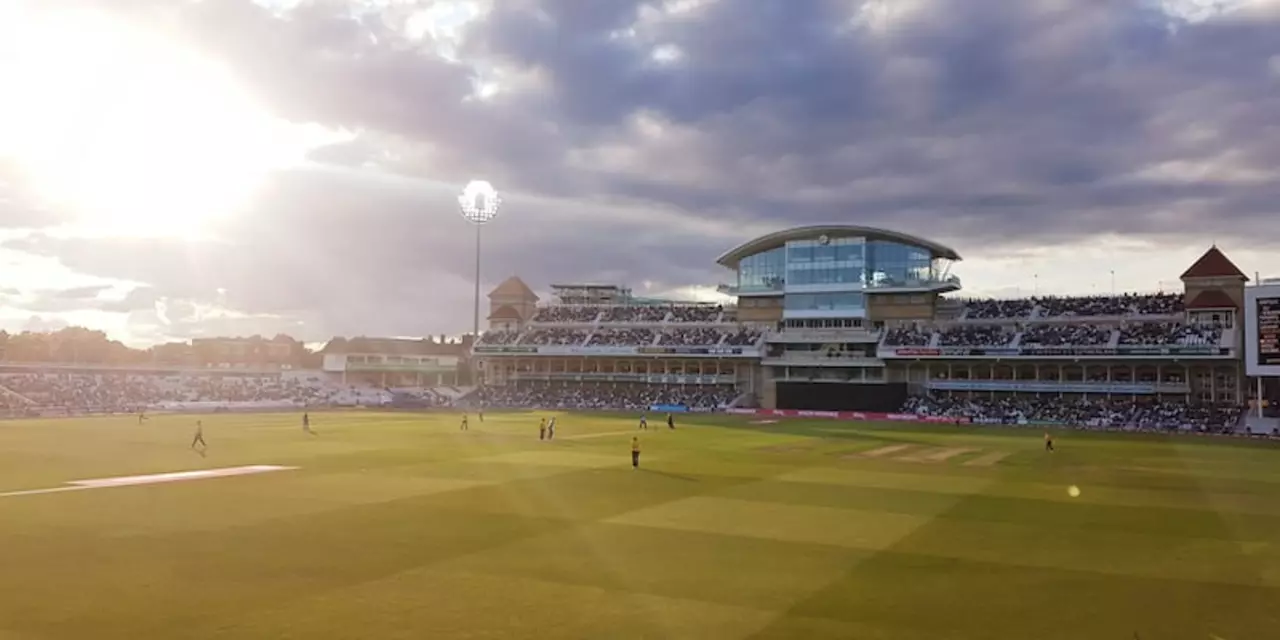
Exploring the Different Sizes of Cricket Grounds: How Many Square Feet Are Involved?
Cricket is a sport that is enjoyed by countless people around the world, and it can be played in a variety of different ways and on different sizes of grounds. If you’re wondering how big a cricket ground can be, the answer is that cricket grounds come in all shapes and sizes, with some grounds as small as 500 square feet and some as large as 1000 square feet.The size of the cricket ground is determined by the number of players involved, the format of the game, and the type of pitches used. Generally speaking, the bigger the ground, the larger the number of players who can take part in the game. For example, a standard cricket ground can accommodate up to 11 players, while a larger cricket ground can accommodate up to 20 players.
The size of the cricket ground can also vary depending on the type of pitches used. For example, a flat pitch requires a larger cricket ground than a sloping pitch. A flat pitch can cover up to 1000 square feet, while a sloping pitch can cover up to 500 square feet.
When it comes to international cricket matches, the size of the cricket ground can be much larger. For example, the Melbourne Cricket Ground in Australia is one of the largest cricket grounds in the world and can accommodate up to 100,000 spectators. The ground covers an area of approximately 12,000 square feet.
Overall, the size of a cricket ground can vary greatly depending on the number of players, the format of the game, and the type of pitches used. The smallest cricket grounds can be as small as 500 square feet, while the largest grounds can cover up to 12,000 square feet.
Analyzing the Variations in Cricket Ground Measurements - What's the Standard Square Footage?
When discussing the size of cricket grounds, it is important to understand that there is no single standard measurement. Cricket grounds come in various shapes and sizes, and the amount of square footage they occupy can vary greatly.In general, most cricket grounds measure between 30 and 60 yards in diameter. However, there are several notable exceptions. Lord's Cricket Ground in London, for example, has a diameter of about 100 yards. Eden Gardens in Kolkata, India, is even larger, at about 125 yards.
To calculate the approximate square footage of a cricket ground, it is important to consider the shape of the ground. A circular cricket ground will have a total square footage of pi multiplied by the square of the radius. A rectangular cricket ground will have a total square footage of the length multiplied by the width.
The amount of square footage on a cricket ground can also be affected by other factors, such as the presence of stands, buildings, or other structures. A cricket ground with a large grandstand, for example, may occupy more space than a ground without one.
In conclusion, while there is no single standard square footage for cricket grounds, most grounds range between 30 and 60 yards in diameter, and the amount of square footage can vary greatly depending on the shape and other factors.
Uncovering the Mystery of Cricket Ground Sizes: How Many Square Feet Are Involved?
When it comes to cricket, the size of the playing field is a mystery to many fans and players alike. How large is a cricket ground, exactly? The answer is not as straightforward as you might expect, as there is no single answer that applies to all cricket grounds. The size of a cricket ground can range anywhere from 13,000 to 20,000 square feet, depending on the type of cricket being played and the regulations of the particular sport.When it comes to international cricket, the size of the playing field is typically larger than that of a club or village match. International cricket grounds must have a minimum length of 450 feet (137 meters). The width of the playing field must also be no less than 180 feet (55 meters). This gives the cricket field an area of around 81,000 square feet (7,500 square meters). However, the actual size of the cricket ground can vary greatly from this, depending on the specific regulations of the sport.
In club and village cricket matches, the size of the cricket field is much smaller. There is no standard size for these types of matches, and the size of the cricket field can range from 13,000 to 20,000 square feet. The size of the cricket field will typically depend on the regulations of the particular cricket governing body or club that is organizing the match.
The size of a cricket field can also vary depending on the type of cricket being played. For example, in One Day Internationals (ODI), the size of the playing field must be a minimum of 140 feet (42.7 meters) wide and a minimum of 450 feet (137 meters) long. In Test matches, the size of the cricket field must be a minimum of 160 feet (48.8 meters) wide and a minimum of 450 feet (137 meters) long.
No matter what type of cricket is being played, the size of the cricket ground is an important factor in determining the outcome of the game. A cricket ground that is too small can put too much pressure on the batsmen and bowlers, while a cricket ground that is too large can give an unfair advantage to the fielding team. It is important for cricket governing bodies and clubs to ensure that the size of the cricket field is appropriate for the type of cricket being played.
Leave a comments